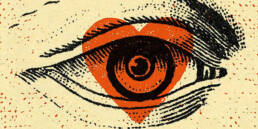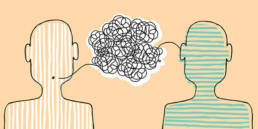[dropcap1]W[/dropcap1]hen sitting down with a client for the first time, a large weather system of ideas and objectives is invariably created – often by multiple individuals; always without structure. As faceless and free-form as these initial discoveries tend to be, they are useful in that they provide insight into the client’s cold, hard business goals, as well as “soft” project considerations such as risk tolerance or internal corporate dynamic. But in order for these ideas to gain any traction, they must be isolated, articulated and prioritized.
Without proper structure, many of the ideas discussed during client strategy sessions (what we refer to at Tangent as “smoke rings”) will eventually dissipate. One of my responsibilities as a Creative Director is to channel these smoke rings into a guiding document that can be followed by all project stakeholders.
The outcome – and the initial project deliverable – is the creative brief, and it is worth its weight in gold.
If you’re the agency, invest the time up front in developing a proper brief. If you’re the client, don’t wade into a project without one. A creative brief will give both sides a clear understanding of what is being undertaken, how, when, and by whom. Projects such as corporate websites or mobile apps contain a lot of moving parts that need to be coordinated. Radio ads involve script writing, character selection, sound design and media planning. Even a stationery package comes with brand management, budgeting and fulfillment considerations.
Many communication design firms use creative briefs, ranging from Saatchi & Saatchi’s minimalist “naked brief” to a more structured template. I’m a fan of the latter, especially in situations where designers, programmers and CEOs collaborate. Here are the broad strokes of a typical Rdeca Group creative brief.
Project Assets
A client will often have photos, logos and related assets to share. Set up one central location for everything (I recommend Dropbox or Google Drive), and tell people how to get there.
Project Workflow
Set the protocols for managing ongoing project communications, sign-offs and the like, then communicate this to the team. Personally, I favour Trello or Basecamp over email for managing project workflow.
Project Timeline
Establish the general timeline for project delivery, as well as interim deliverables. This vital piece of the brief motivates developers and manages client expectations.
[pullquote]THE PROS OF PREPARING A CREATIVE BRIEF ABOUND: INSIGHT; ACCOUNTABILITY; FOCUS; PHONE NUMBERS; AND THE ULTIMATE ASS COVER OF HAVING THINGS IN WRITING.[/pullquote]
Team Members
From the Project Manager to the client’s receptionist, take the time to aggregate all contact info for all players into the brief. Trust me, this will save considerable time down the road.
Brand Promise Differentiators
Every company has a set of attributes that separate it from its competitors. By listing these differentiators, you create a strategic touchstone that can be referred to throughout the project.
Audience
Determine Which groups of people will be consuming your client’s content. Prospective clients? Investors? Current employees? This will inform the voice and nature of your content.
Competitors
It’s important to scan your client’s competitors to see who’s who in the pecking order. This will not only give you a greater understanding of the client’s offering, but insight into the relative sophistication of the client’s market space.
The pros of preparing a creative brief abound: insight; accountability; focus; phone numbers; and the ultimate ass cover of having things in writing. There is only one possible con to consider: if your brief is poorly written, it will fail to capture the essence of a project, and it will cast serious doubt on your firm’s communication chops. So entrust this critical piece of the communications puzzle to a pro.
Sean Mellis
Sean Mellis is a professional communicator with more than two decades of dedicated expertise helping local governments and non profit organizations prosper. His firm Tangent Civic has been engaged by public-sector administrators whose business goals are often thwarted by fragmented communications programs and hit-and-miss vendors. He helps these clients by becoming an adjunct to their existing communications resources – providing the strategic thought and creative output that each engagement requires.


